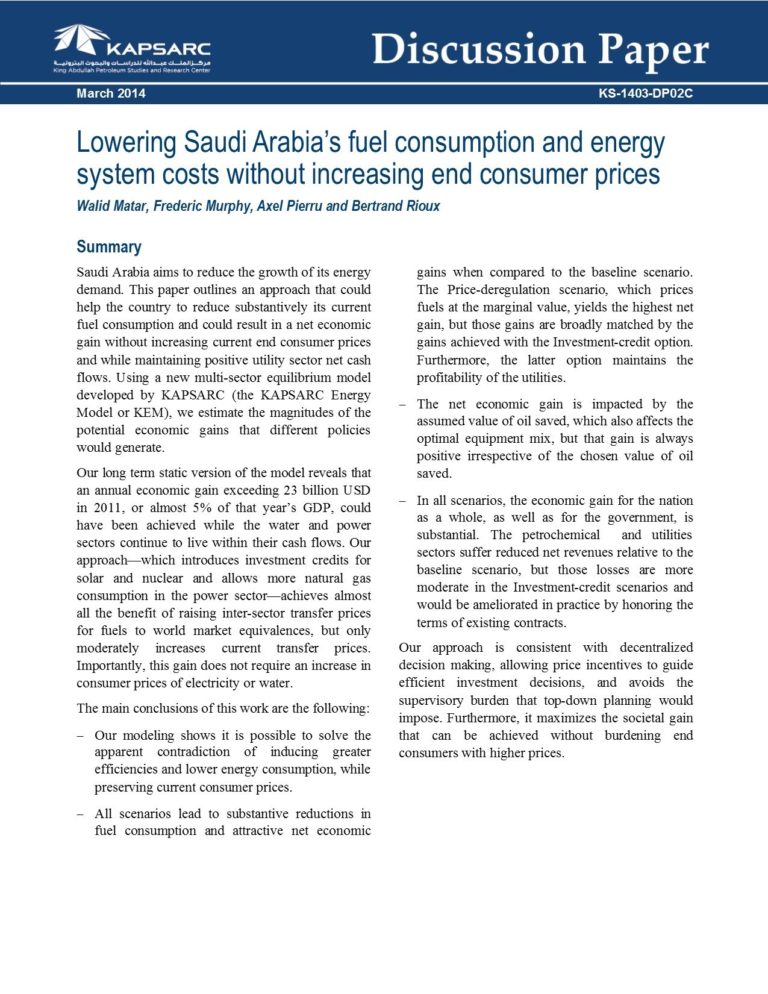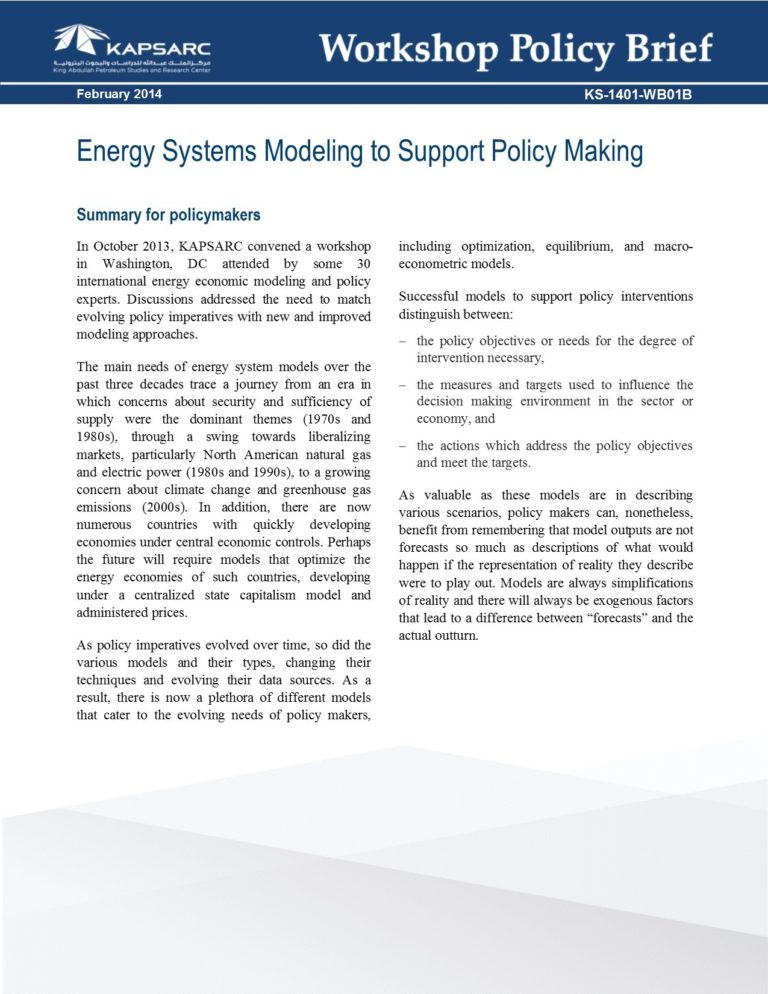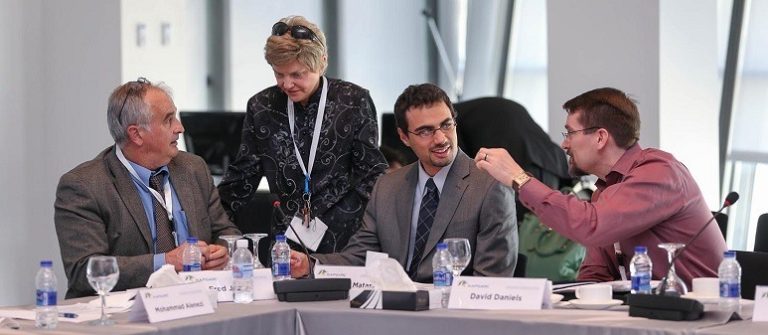The second KAPSARC Energy Workshop was hosted by The George Washington University, Washington DC on October 3, 2013. The workshop followed the new KAPSARC signature meeting format with participants seated at a round table, which provided an informal atmosphere thereby encouraging free-flowing discussion.
The workshop began with historical perspectives on how the policy landscape has evolved over the last two decades and what questions may be asked in the future. The objective was to have presentations with interactive discussions about changes in policy imperatives which have led to new model forms and the evolution of existing models.
Presentations were given by different policy modelers and policy makers on the questions energy economic modelers have been asked to analyze and how existing models were modified to address these questions. These included the National Energy Modeling System (NEMS) by the U.S. Energy Information Administration (EIA), IMF’s Oil Model, Water Use Models, Domestically and International, Trade Flows, US and Global Natural Gas Models.
Participants included quantitative modeling thought leaders and experts from the Congressional Research Service, the Federal Energy Regulatory Commission (FERC), Resources for the Future (RFF), the World Bank, and BP. There were also experts from various US universities, such as John Hopkins University, Rutgers University, George Washington University, Temple University, University of California Davis, University of Illinois, University of Pennsylvania, Duke University, Stanford University, and the Southern Methodist University.
The workshop provided the Center with the first opportunity to present KAPASRC’s Energy System Mixed Complementary Model for the Kingdom of Saudi Arabia for external review. The KAPSARC Energy Model (KEM) addresses key issues in energy economics and policy. In this first application, it addresses the question of whether Saudi Arabia can implement a set of transfer prices among energy sectors that induce greater efficiencies, lower energy consumption, and preserve current consumer prices, minimizing societal burden. Built from the ground-up in just seven months by KAPSARC, the model links several energy sectors (upstream, refining, petrochemical, power and water). One of the key features of the model is that it accommodates regulated pricing by using novel techniques such as Mixed Complementary Problem (MCP) formulation, rather than conventional methods, such as linear programming, which assume marginal prices between energy sectors.
The design of KEM enables small countries with administered prices to transition at relatively low social cost to competitive pricing and markets in most goods. Administrated price systems create supply and demand inefficiencies leading to misallocation of resources like capital and excessive energy consumption. Fiscal policy can be used rather than deregulated markets to achieve near market allocations. KEM was used to illustrate an example for the Kingdom. The architecture, methodology, and technology of KEM has been designed to conduct further studies on the Kingdom and applied to other countries.



